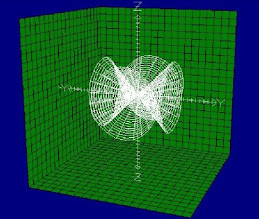 In my introduction post, I qualified quantum physics as being nearer to intuition than classical physics. As this is not a widespread opinion, this needs some explanation. Understand me well, I don't say that quantum physics is better understood than classical physics. I merely infer that, because quantum physics deals with elementary particles, its principles should be easier to grasp than the classical principles. But as our reasoning has been formatted since our first physics classes into a classical mould, we are not trained to analyse the ordinary world quantum-mechanically.
In my introduction post, I qualified quantum physics as being nearer to intuition than classical physics. As this is not a widespread opinion, this needs some explanation. Understand me well, I don't say that quantum physics is better understood than classical physics. I merely infer that, because quantum physics deals with elementary particles, its principles should be easier to grasp than the classical principles. But as our reasoning has been formatted since our first physics classes into a classical mould, we are not trained to analyse the ordinary world quantum-mechanically.The framework of classical physics did not emerge easily during the course of history. It took many efforts from men like Newton (represented by Gotlib in the image), Lagrange or Hamilton to formulate classical principles. Newton had the exceptional capacity to put the classical laws into a few comprehensive sentences. Let us remind his three laws:
- Every body continues in its state of rest, or of uniform motion in a right line, unless it is compelled to change that state by forces impressed upon it.
- The change of motion is proportional to the motive force impressed; and is made in the direction of the right line in which that force is impressed.
- To every action there is always opposed an equal reaction: or, the mutual actions of two bodies upon each other are always equal, and directed to contrary parts.
 As far as I know, an analogous clear and simple formulation of quantum physics does not exist. There are some tries of physicists like Feynman that are on the good path, see for example his 3 general principles concerning probability amplitudes (in chapter 3 of his Quantum Lectures on Physics) or his explanation of path integrals with rotating arrows (in QED). But we have not yet succeeded to express the quantum laws in an ordinary way like Newton expressed the classical laws. We are very much in need of Simplifying Physics's Quantum Rules, in order to make it more accessible to populusque. Why not take our inspiration from Newton? Let me have a try. Newton considered translational motion. Quantum evolution is about the phase change of arrows, i.e. self-rotational (spinning) motion of arrows. So we could put it in this way:
As far as I know, an analogous clear and simple formulation of quantum physics does not exist. There are some tries of physicists like Feynman that are on the good path, see for example his 3 general principles concerning probability amplitudes (in chapter 3 of his Quantum Lectures on Physics) or his explanation of path integrals with rotating arrows (in QED). But we have not yet succeeded to express the quantum laws in an ordinary way like Newton expressed the classical laws. We are very much in need of Simplifying Physics's Quantum Rules, in order to make it more accessible to populusque. Why not take our inspiration from Newton? Let me have a try. Newton considered translational motion. Quantum evolution is about the phase change of arrows, i.e. self-rotational (spinning) motion of arrows. So we could put it in this way:![]()
- Every arrow-like body continues in its state of rest, or of uniform spinning motion, unless it is compelled to change that state by forces impressed upon it.

- The change of spinning motion is proportional to the perturbative force impressed.
- The mutual actions of two spinning arrow-like bodies upon each other are always equal, and directed to contrary parts.
If quantum physics is introduced in such a way to beginners, I guess they would gain faster insight into quantum behaviour without being hindered by classical reasoning.
More about it at the related wikiversity project.


